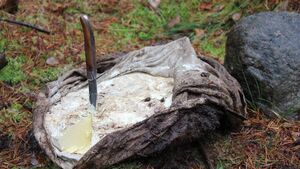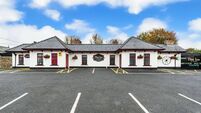Living Greener: Bog butter is good on popcorn!

Bog Butter
BOGS are one of Ireland’s great unappreciated resources, not just as a source of fuel or as a home for wildlife, but for its ability to preserve things for centuries.
The acidic, oxygen-poor water of a bog does not allow dead organic matter to decompose in the normal way, so turf-cutters here still fish out trees that fell in centuries ago, their wood stained black but not rotten.
Occasionally people find human bodies sacrificed by Druids thousands of years ago, their skins blackened and cured like leather but their faces still recognisable.
Sometimes they find possessions hidden in the bog that their owners never came back for; necklaces, coins, tools and swords.
And sometimes they find stores of food, up to 3,000 years old and not only intact, but edible. Specifically, they find butter.
Bizarre as that sounds, more than 430 caches of butter have been found in bogs, some small as fists, some big as barrels.
The aforementioned 3,000-year-old butter weighed more than 35 kilos, the size of a child.
And a surprising number of adventurous finders sampled the butter, and reported it delicious. Since we can suppose that people buried their butter to unearth and eat it later, and usually did so, these hundreds of finds must represent the small proportion of times that their owners died or the locations forgotten. This must have been a rather commonplace activity.
So why butter, you ask? A surprising number of foods around the world are preserved by being buried in the ground, but they are usually dried foods in arid climates (cheese in Italy), or sub-Arctic countries where the ground is freezing (salmon in Sweden), or where the food is meant to ferment in some way (eggs in China).
In this case it’s waterlogged ground, it would probably disintegrate in the water over time unless it’s naturally waterproof, like fat. Butter makes a valuable and high-calorie food for poor agrarian people; with it you can fry food or preserve things like potted meats. It was also taxed in medieval times, so burying it could have been a kind of tax evasion.
My daughter and I made some butter at home, which anyone can do; you just pour milk and cream into a jar, put on some music and start shaking.
I couldn’t fill it more than a quarter full, or we would just get whipped cream, so I had to do this many times to get the three pounds. At some point the sound of the sloshing changes, and you get a solid clump of butter in the middle of the liquid.
Then I froze it to keep it solid while I handled it, wrapped it in cheesecloth and a rope, and walked about ten minutes from our house into the bog. I paced the steps first in one direction and then another to make sure I would remember the spot, and tied the rope to a nearby tree to I could find it again.
Seventeen months later I dug up the butter, once I washed it off and unwrapped it, the butter looked much the same – a darker yellow and with an earthy smell, but not rancid. The taste was recognizably butter, but with an umami flavour a bit like parmesan or ripe cheese; I don’t know how baked goods would taste using it, but it was particularly good over popcorn.
It wasn’t something most modern people would choose to eat regularly, but for people who faced periodic famines, it was an ideal store for lean times.
If you’ve ever seen the BBC show QI, by the way, I’m delighted to say that their episode ‘Quagmire’ had a segment featuring me and the bog butter, with photos taken right here in Co Kildare.
Of course, this butter was only in the bog for 17 months, and the effects are probably very different over 3,000 years.
So I’m burying more butter for a longer period of time – dozens of kilos -- and planning to unearth it in about three to five years, some further down the road. If anyone wants to buy some in advance, you can be one of the few people in the world who can say they had this ancient food.






